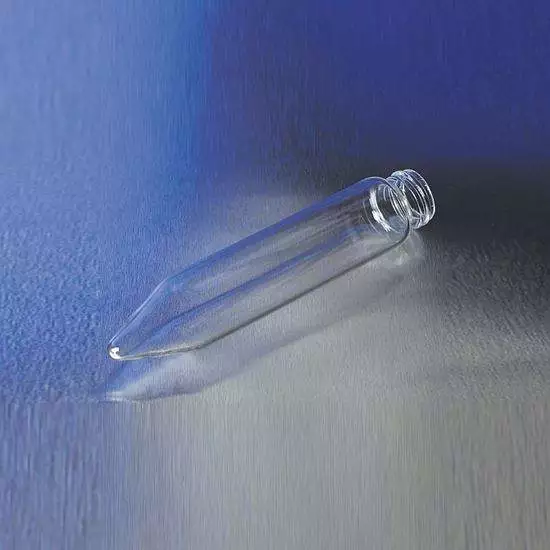Comparing Glass and Plastic Centrifuge Tubes
Sep 09, 2023
Centrifuge tubes are commonly used in the market and are primarily divided into two main categories: plastic centrifuge tubes and glass centrifuge tubes, with a few being made of steel. So, what are the distinctions between these centrifuge tubes of different materials?
Glass Centrifuge Tubes:
Glass centrifuge tubes are constructed from glass, with variations in glass composition among different manufacturers, resulting in slight differences in strength. Ordinary glass test tubes can typically withstand relative centrifugal forces (RCF) of less than 3000g, while borosilicate glass tubes can endure over 10,000g of RCF. However, due to the fragility of glass centrifuge tubes, they are generally not used in high-speed centrifuges and are less common for this purpose.
Glass, due to its inherent characteristics, exhibits excellent chemical stability, coexisting harmoniously with acids, bases, organic solvents, and heat. Glass tubes maintain stable shapes, can withstand a degree of compression, but are susceptible to breakage upon impact. While they can resist high temperatures and thermal shocks, they can also fracture easily in environments with sudden and extreme temperature changes. Glass centrifuge tubes' primary advantage lies in their high transparency, allowing clear observation of sample properties and changes through the tube walls. Moreover, most glass centrifuge tubes have outstanding chemical resistance, better than that of plastic, with low extractables and minimal impact on samples.
However, the material properties of ordinary glass limit its use in high-speed centrifuge applications, making it unsuitable for ultra-high-speed centrifuges.


Plastic Centrifuge Tubes:
Plastic centrifuge tubes are typically made from biocompatible polypropylene (PP) materials. PP materials offer high transparency, ensuring clear visibility of sample and centrifugation results. Plastic centrifuge tubes meeting production standards generally do not contain heavy metals, metal ions, DNA, RNA enzymes, or endotoxins and undergo gamma-ray radiation sterilization. These tubes can withstand a temperature range from -80°C to 121°C, tolerate high-temperature and high-pressure sterilization, and even ultra-low-temperature storage at -86°C.
The characteristics of plastic centrifuge tubes include their ability to be deformed under pressure and resistance to breakage, providing a certain level of transparency. Plastic is more durable and cost-effective than glass. Plastic centrifuge tubes can meet the requirements of high-speed centrifugation and endure centrifugal forces of up to 12,000 × g. Due to their lower hardness, plastic tubes can be pierced for sampling. However, they are susceptible to deformation under pressure, have poorer resistance to organic solvent corrosion, and a shorter lifespan. Currently, plastic centrifuge tube manufacturing processes are mature, offering a variety of sizes at competitive prices. In general, large laboratories use disposable plastic centrifuge tubes, with limited recycling or reuse.
Common specifications for plastic centrifuge tubes include 0.2 mL (PCR tubes), 0.5 mL, 1.5 mL, 2 mL, 5 mL, 10 mL, 15 mL, 50 mL, 250 mL, among others. Glass centrifuge tubes are rarely produced as microcentrifuge tubes. Different materials have their respective advantages and disadvantages, and no single material can fulfill all centrifugation experiment requirements.
In summary, glass centrifuge tubes are known for their high-temperature resistance, capable of withstanding temperatures as high as 200°C, and they offer high transparency for clear sample observation. However, they are fragile, require careful handling, and tend to be more expensive. Plastic centrifuge tubes, on the other hand, are made of materials like polypropylene, polyethylene, and PVC. They are cost-effective, easy to store and use, and less prone to breakage. However, they are not suitable for high-temperature applications, can only withstand lower temperatures, and have lower transparency, resulting in less effective sample observation compared to glass centrifuge tubes.
Previous: Analysis of Abnormal Pipetting Volumes in Pipettors
Next: How to Sterilize Pipettes Effectively



